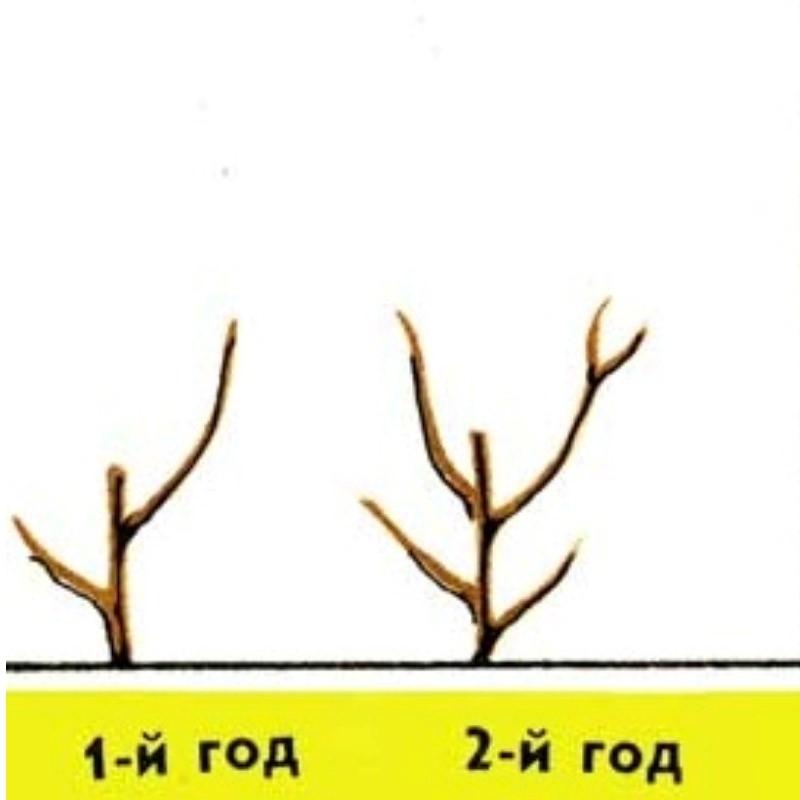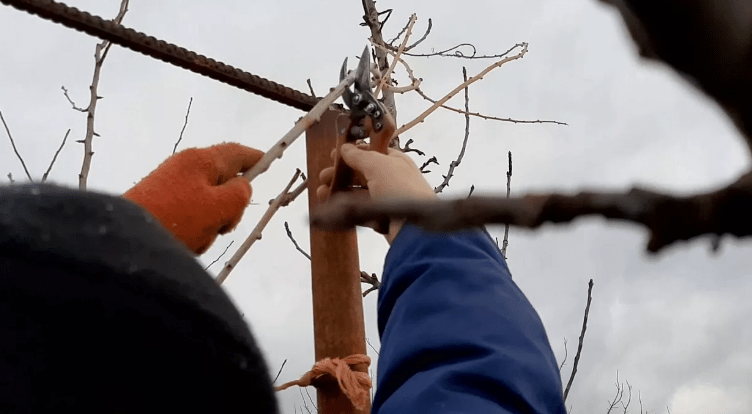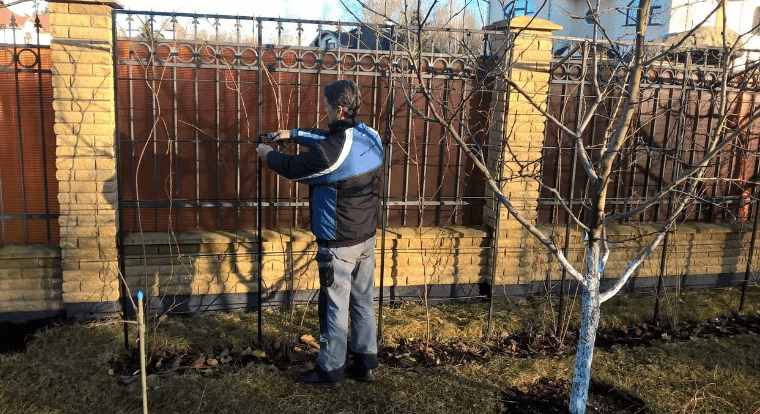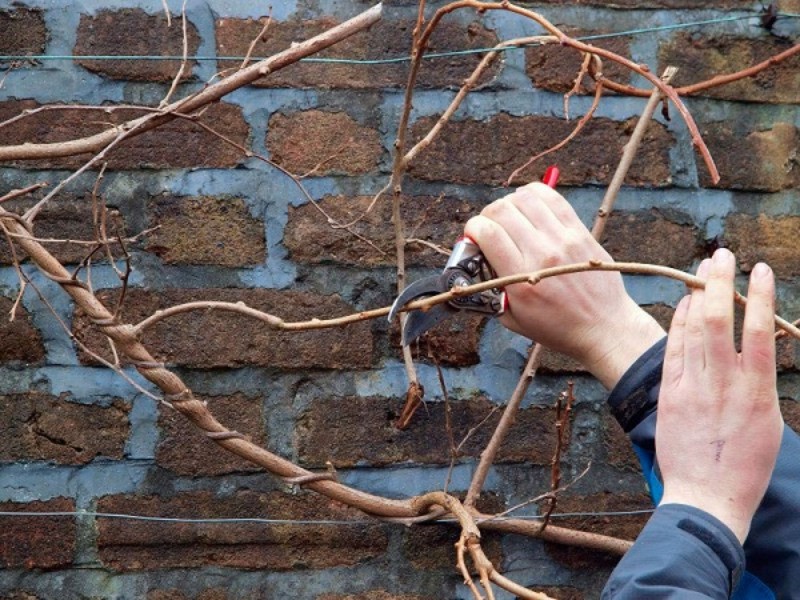Content
Actinidia is one of the garden crops that need proper care. Only in this case will this perennial vine be able to become a long-liver in the garden and produce a generous harvest every year. One of the most basic care procedures is actinidia pruning. It helps maintain the viability of the plant at a high level, ensures large fruit size and regular rejuvenation of the vine. In order for the procedure to benefit the plant, it must be carried out within a certain time frame and taking into account the type of actinidia.

Actinidia needs proper pruning
Methods of formation of actinidia
To successfully grow a vine and produce abundant fruit, it is necessary to correctly form the crown. This is carried out in order to create optimal conditions for the development of the plant, as well as to simplify its care. Actinidia can be formed using a fan, bush and horizontal method. Each of them has features that need to be paid attention to, since any mistakes made can not only significantly weaken the vine, but also cause its death.
It is necessary to prune actinidia taking into account the functionality of its shoots. Since there are three types of them: growth, generative-vegetative and fruit-bearing. The first ones grow from the buds of two-year-old and older branches, form the skeleton of the plant, and perform a supporting function. Their characteristic differences are short internodes, large leaves, and accelerated growth rate.
The latter are formed on the growth of the previous year, are often branched and reach a length of 60 cm. They perform a supporting function, but also have a small number of large fruits at the top. Well suited for cuttings.
Still others are shoots of the third order, growing on annual branches. Their length usually does not exceed 10 cm. The apex of fruiting shoots is blunt. The productivity of actinidia depends on them. When growing vines in the shade, fruiting shoots may dry out after harvesting. They are not used for reproduction.
Fan formation of actinidia
The formation of actinidia in the form of a fan should begin in the year of planting. First of all, you need to install trellises next to the plant. Then you need to select 3-4 well-developed growth shoots and tie them to a vertical support at an angle to the base of the actinidia. In this case, it is recommended to spread the branches in different directions on the trellis and fix them in the form of a fan on the lower tier. After this, you need to trim all other shoots at the base.
In autumn, skeletal main branches should be pruned back to the level of mature bark, which can be identified by its dark brown hue.The next season, each branch of the vine will form a lateral growth, from which it is necessary to leave the strongest generative and vegetative shoots. It is they who will subsequently form fruiting branches. The grown shoots for the second season must be tied to the second and third tiers of the trellis, distributing them evenly on the support.
In the fall, you also need to shorten the remaining branches to mature bark and trim off all thickening and unnecessary branches. In the future, it is necessary to regularly remove old shoots and replace them with young ones.

The fan shape provides good illumination and ventilation of the actinidia
Cluster formation
This pruning method is recommended for regions with difficult climatic conditions. Bush actinidia tolerates frost better and requires minimal shelter. However, with such pruning it will not be possible to achieve abundant fruiting. Therefore, it is necessary to plant several plants at the same time to get a good harvest.
It is recommended to start forming a plant using this method in the second year after planting. To do this, you will need to select 3-4 strong shoots and trim them at a height of 40 cm, and completely remove the remaining branches. After a year, shorten the remaining shoots by 1/3 of the length and select 3-4 new ones. They also need to be cut to 40 cm.
Repeat the procedure in the third year. In this way, a lush actinidia bush will be formed. It should contain no more than 12-13 skeletal branches. It is also necessary to regularly trim dry and damaged shoots to ensure good illumination of the actinidia.

Bush formation increases the plant’s resistance to adverse external factors
Horizontal cordon
This method of forming actinidia is recommended to be used already in the first season after planting. To do this, you need to select two strong shoots of the vine and spread them in different directions on the lower tier of the trellis, forming a horizontal cordon. Its width should not exceed 2 m. And in the fall it is necessary to prune all other shoots.
Next year, when the skeletal branches begin to produce lateral productive shoots, they must initially be fixed vertically, and subsequently spread in two opposite directions on the upper tiers of the trellis. Using the same scheme, annually select two new pagons, but already growing from the shoulders of the cordon.
As the productivity of the shoots decreases, they need to be shortened to 4-5 buds above the topmost fruit.
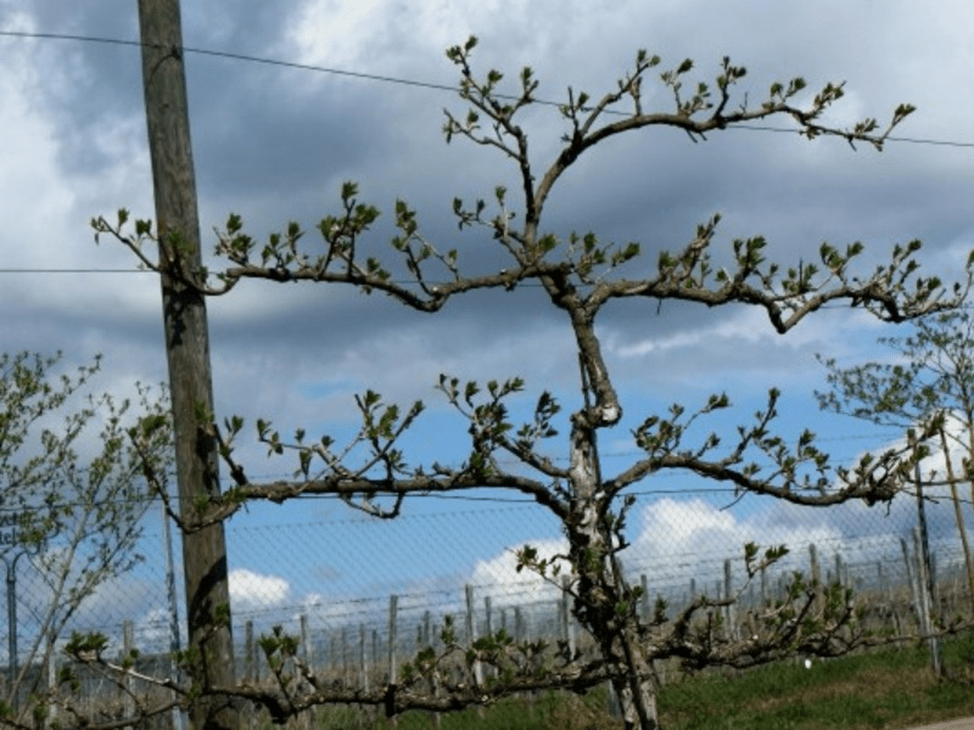
Forming a horizontal cordon makes it possible to promptly remove old branches
Tools and materials
Successful cultivation of actinidia depends not only on pruning, but also on correctly selected supports for the formation of the vine. This is due to the fact that actinidia belongs to the category of light-loving crops, so good illumination of all branches throughout the day is important. Therefore, to secure the plant, it is recommended to use trellises with strong posts.
They can be made of concrete, iron or oak, the main thing is that the support can withstand the increased load. It is recommended to stretch several tiers of wire between the posts, the bottom of which should be at a height of 50 cm, and the next at 100 cm, and so on.
Actinidia should be pruned with pruning shears. It should be sharp, allowing you to make cuts in one motion.This promotes rapid healing of wounds.

Before each use, the pruning shears must be disinfected
When pruning actinidia, you also need to have garden pitch or clay on hand. These putties should be used on fresh cuts.
When to prune actinidia
Actinidia pruning must be carried out within a certain time frame. This is due to the fact that during the growing season, active sap flow is observed in the shoots of the plant. And if you prune at the wrong time, it begins to leak profusely. In this case, actinidia is greatly weakened, so it requires long-term recovery and may die.

Meeting the deadlines allows you to trim actinidia painlessly
in autumn
It is believed that it is correct to prune actinidia in the fall. Moreover, it is recommended to do the procedure after the vine leaves fall, when the plant enters the dormant stage.
The optimal time is the end of October or the beginning of November. But at the same time you also need to focus on weather conditions. Pruning must be done before frost sets in. Therefore, the dates may shift depending on the climate of the region.
in spring
Spring is not the best time to prune actinidia. This is due to the fact that during this season, warmth can come very quickly, which activates sap flow in the plant tissues. Therefore, the likelihood of the trimmed actinidia expiring increases.
If it is necessary to carry out the procedure in the spring, it should be done at the end of February, at the beginning of March, in the absence of frost. Later pruning in the spring is undesirable. It is better then to postpone the procedure until the fall.
In summer
In the summer, actinidia can be pruned after the vine blooms.By this time, the plant’s growth processes have slowed down for a while, so the procedure can be carried out with minimal stress on the plant. The optimal period for pruning actinidia in summer is mid-June.
How to prune actinidia correctly
In order for pruning to benefit the plant and increase its productivity, it is necessary to take into account not only the age of the vine when it is carried out, but also its species. Only in this case can you expect that the plant will quickly recover after the procedure and its level of viability will increase.
Depending on age
Actinidia pruning for young seedlings should begin immediately from the moment of planting. This makes it possible to immediately redirect the plant’s forces to form the crown in the desired direction.
Procedure for pruning young seedlings:
- After planting, it is necessary to trim all shoots of the plant, leaving no more than three buds on them. In the second year, they will form skeletal branches of the vine.
- For the third season, you need to select the three strongest shoots, and from the bottom of the actinidia, cut off several branches at the base that are superfluous.
- In the fourth year, the skeletal branches form lateral fruiting shoots. They need to be tied to a support and pinched.
- In the fifth season, actinidia fruit branches grow. It is recommended to trim only old fruit-bearing branches up to four buds, and also remove growth shoots that thicken the vine.
For adult actinidia, it is recommended to regularly clean the crown of broken, damaged and dry branches. It is recommended to do this in late autumn.Also, old actinidia bushes need rejuvenating pruning as their productivity decreases. It needs to be done every eight years. Otherwise, the middle part of the bush crown loses functionality.
Procedure:
- Trim the young growing growth at the base of the actinidia. This will redirect the plant’s forces to the development of new productive branches of the crown.
- Then it is recommended to shorten the skeletal branches of the vine to the level of the stump at a height of 30-40 cm.
- Subsequently, it is recommended to annually shorten the growing shoots by 1/3 of the length and remove all excess thickening of the crown.
Depending on the variety
When pruning actinidia, it is necessary to take into account its type. This is due to the fact that in different vines the harvest is formed not only on elongated but also on short shoots. Therefore, pruning helps stimulate their active growth and thereby increases the level of productivity.
In Actinidia kolomikta, fruits are formed both on short shoots and on generative-vegetative shoots, the length of which is usually about 60 cm. Therefore, you should not be overzealous with pruning in this case. Moreover, the procedure can only be carried out from the age of seven years of the plant.
Procedure:
- Cut out fruit-bearing branches older than three years. They can be replaced with one to three young shoots.
- Shorten the growth skeletal branches to the required length, depending on the chosen crown shape.
- Trim the generative-vegetative shoots to a length of 30 cm. But it must be taken into account that when they are overgrown with leaves, the entire crown of the vine must be well lit, otherwise the shaded branches will begin to dry out.
Actinidia arguta forms a crop only on short fruit-bearing shoots. Therefore, when pruning, this must be taken into account.
Procedure:
- Carry out intensive thinning of the crown, removing all thickening shoots, as well as damaged and broken ones.
- Apply short pruning of generative-vegetative branches while pinching short fruiting branches.
Care after pruning
After pruning, all wounds of the plant must be treated with garden varnish. This will eliminate the possibility of pathogenic microflora entering them. Since pruning is recommended to be done late in the fall, after it the plant must be prepared for winter. To do this, its crown needs to be wrapped in several layers of agrofibre and the material secured so that it does not blow away in the wind.

The actinidia trunk circle needs to be covered with spruce branches
If pruning is carried out in early spring or summer, it is recommended to feed the vine with phosphorus-potassium fertilizers after treating the wounds. This will improve her immunity and speed up recovery.
Conclusion
Pruning actinidia is an integral part of caring for this plant. The volume of the harvest and its quality directly depend on this procedure. However, it must be carried out taking into account all recommendations. Otherwise, the plant will not be able to develop and will eventually die.
